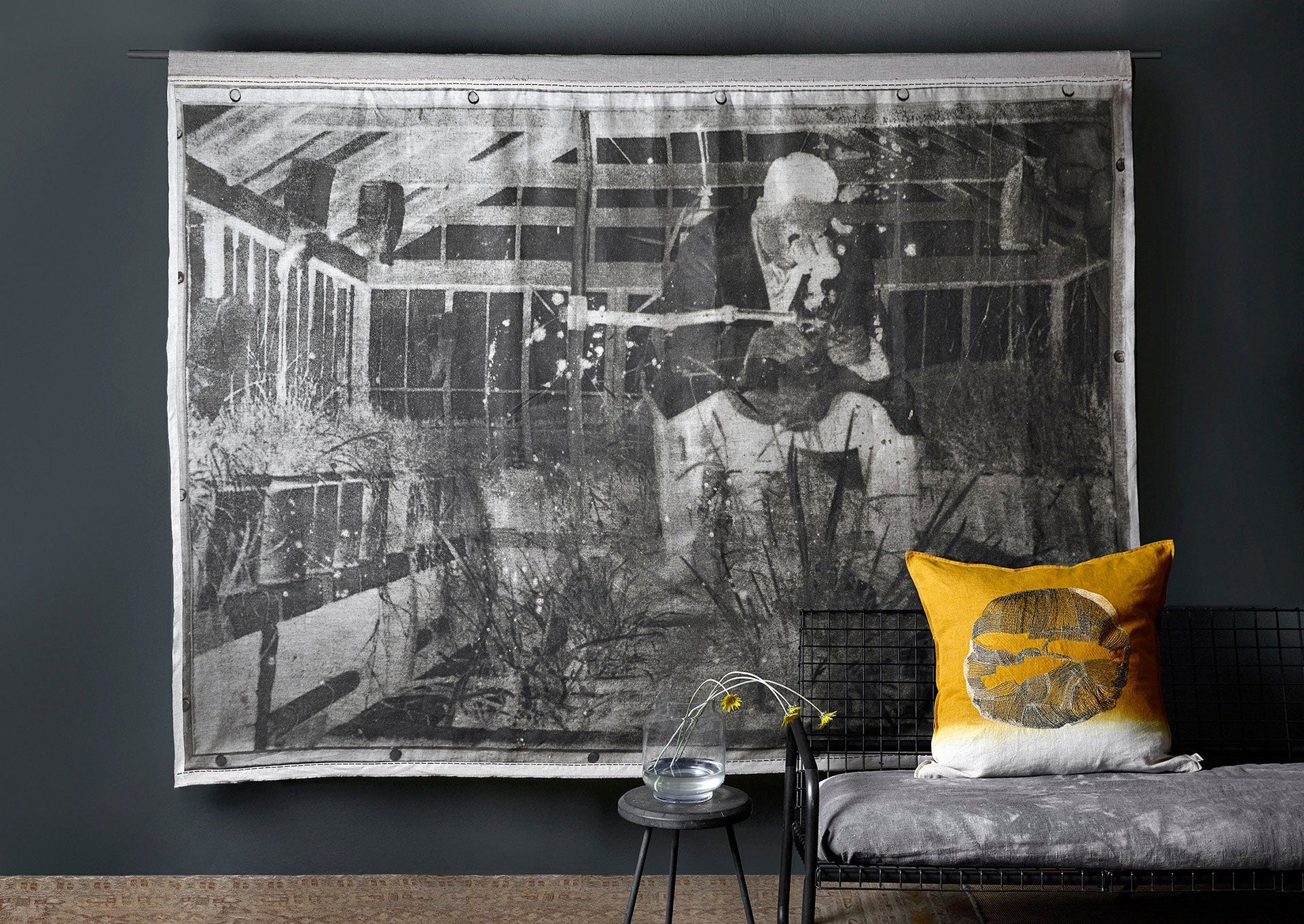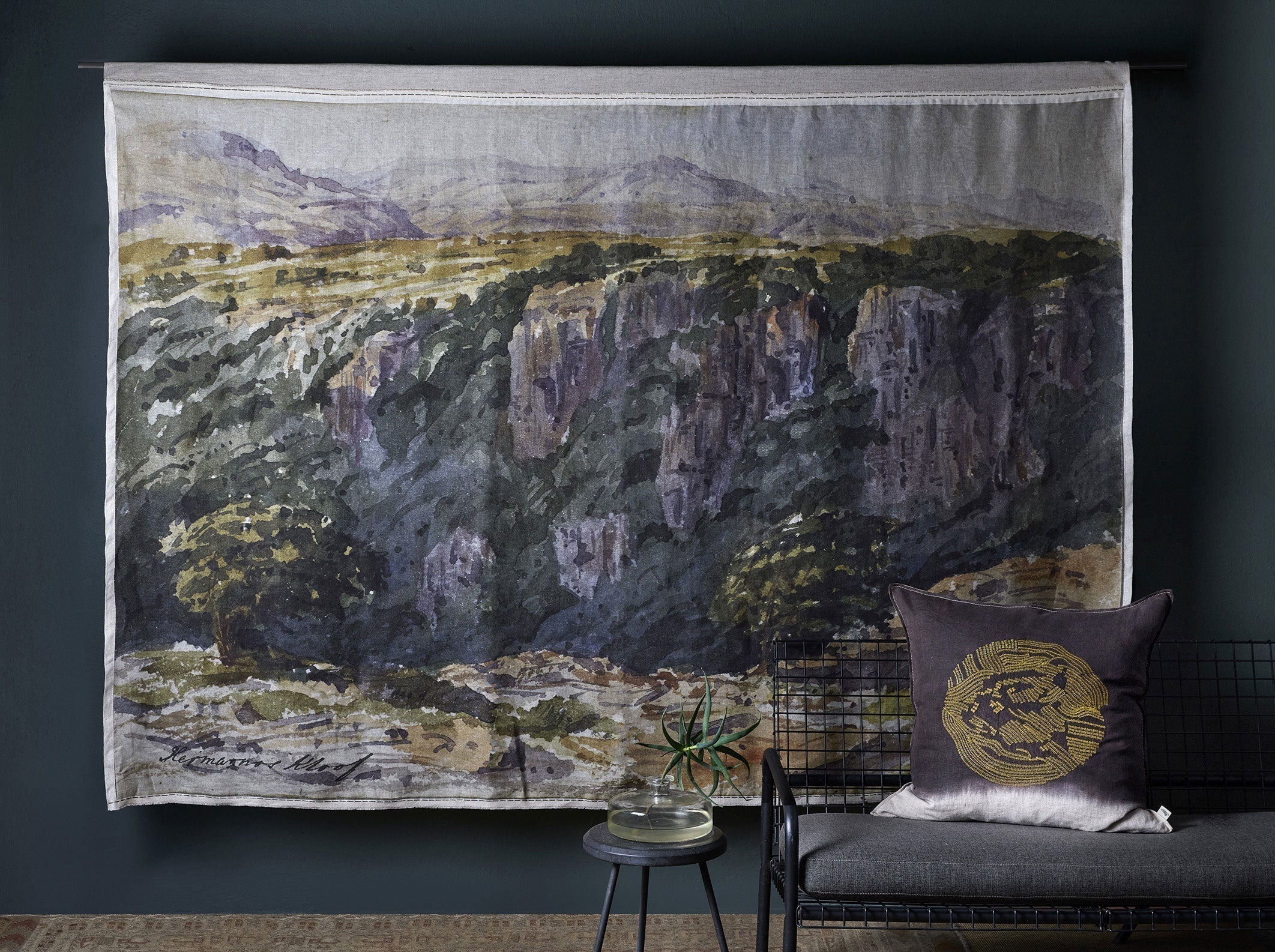
The Call of The Karoo: Letter Two
Follow along…..
I remember my mother Bella telling me that the Karoo was once a lake…. and reminiscing about a fish fossil that her grandfather, Jurie Laubscher, discovered in the early 1900’s on Wellwood farm, near Graaff Reinet. A friend’s ceramic gift with the wording “Die Karoo was eens 'n oseaan” ignited my desire to research this narrative.

Our beautiful Call of The Karoo range celebrates researchers and historians; the custodians of this heritage who reveal and preserve the treasure of fossil species in our country.

The above fossil is called Atherstonia scutate. It was collected by RU Mutter in 1970 near Nieu Bethesda and is at least 250 million years old.
The story of the fish fossil led me to the Paleontology department at Wits and the brand new Fossil Museum in Graaff Reinet. It has been an incredible experience and a privilege to delve into research and conservation by passionate paleontologists. I met with Bruce Rubidge, Jonah Choiniere, Dr. Sifelani Jirah, Marion Bamford and Rob Gess who’s knowledge and commitment to Paleontology is inspiring.
There are specimen studied and saved in these collections that date back 200- 350 million years.
These discoveries created a unique layer to our product development and love of this exceptional biosphere.

The first mammals in the world roamed this area, and this heritage must add to the sense of belonging we feel when we travel to this beautiful part of our country.
The above Semionotus fossil was discovered by the Kitching brothers in 1946. Although this specimen was discovered in the sandstone of the Clarens formation and dates back 190 million years, this group formed part of the Semionotiformes and has a close living relative in the Gars.
We discovered that fossils did not wait to be fossilized J and found this specimen the most user-friendly for the above embroidery design.

Above wall art panel - Microscope man – honoring past and modern-day researchers who records and protects our Fossils, Fauna and Flora.

The above fossils is a horsetail called Phyllotheca australis. Of the late Permian age, it was common in wetlands and the above-ground stems and underground rhizomes (that looked like the above-ground stems) would have been the staple food for the herbivores – like grass is today. The living relative is Equisetum.

The fossil on the right is a skeleton of the dinosaur Massospondylus collected on Naude’s Nek by Wits PHD student Bailey Weiss. It was found by a local farmer Juan-Marie Naude on the road close to her farm Vrederus. This beautiful farm is situated at the foot of the Drakensberg range, in the Eastern Cape and has amazing views - if you ever travel in this area and would like to pay a visit.
The fine lines embroidered on our fossil cushions honor the technicians' careful engraving and preparation of the fossils. The meticulous prep and preservation process requires stabilising, engraving ,brushing and cleaning each relic - a tenderness with science.

These items forms part of our latest range called The Call of the Karoo. Celebrating my darling Mom Bella’s heritage and memories, in her 90th year.
 All items in the range are available in our online store.
All items in the range are available in our online store.






